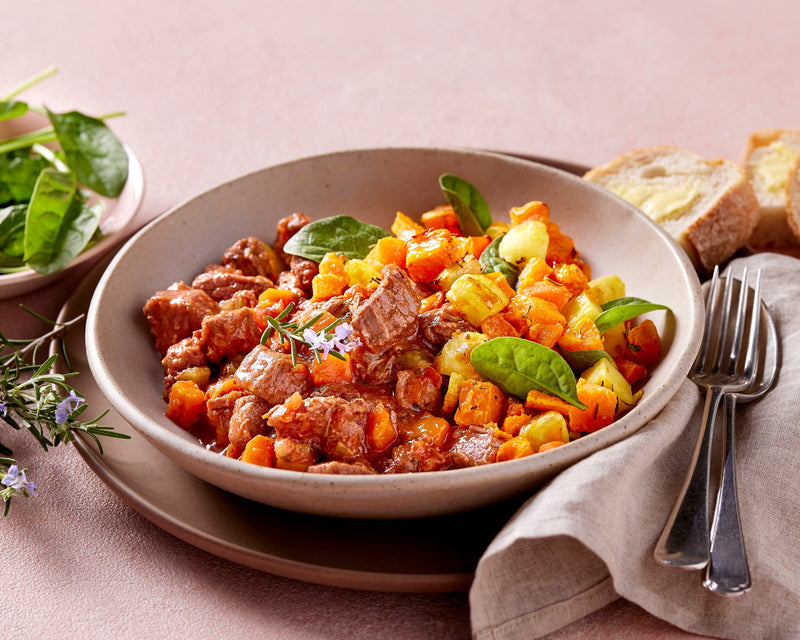Omega-3s, you’ve heard the buzz about them and numerous health benefits everywhere, but what are they really and are they actually as good for you as everyone says?
What are Omega-3 Fatty Acids?
Omega-3 is short for omega-3 polyunsaturated fatty acids. There are 3 main types of omega-3s; ALA (α-Linolenic acid), EPA (Eicosapentaenoic acid) and DHA (Docosahexaenoic acid) all of which are considered ‘essential’ as they cannot be made in the body without a dietary source. Let’s break down the alphabet lingo -
EPA + DHA
- These are the more biologically active forms and offer the most health benefits
- Sources: oily fish (e.g. salmon, sardines, fresh tuna (but not tinned tuna), seaweed, omega-3 fortified products (e.g. yoghurt, eggs, spreads, milk)
ALA
- ALA predominantly functions to make EPA which in turn makes DHA. Think of it as the ‘parent fatty acid’ that gets converted to EPA and DHA. The rate and overall conversion from one to the other is quite limited with only 6% of EPA and 3.8% of DHA said to be converted from ALA.
- Sources: walnuts, chia seeds, hazelnuts, soybeans and tofu, legumes and small amounts in green leafy vegetables.
What are the health benefits?
2 words- Heart, Health. DHA and EPA are said to improve heart health through normalising heart function, blood pressure, and blood triglyceride levels. All of which contribute to reducing the risk of heart disease, improving blood pressure and cholesterol levels1-3. On top of this, there is also emerging research linking omega-3s (DHA) and its role in brain function and normal vision, particularly as our brains already have a high concentration of omega-3.
Interestingly though, most research is conducted using supplementation (fish oils) so the direct effects of eating fish as part of a healthy diet is not concrete. Moreover, other studies have found either no difference and use subjects with underlying chronic diseases, using various dosages over different time periods making it even more complex to find direct correlative health benefits.
How much do we need?
The Heart Foundation recommends 250 – 500mg of EPA and DHA per day. This is roughly 2-3 serves of fish per week, one of which should include an oily fish.
1 serve of fish = roughly the size of your hand (approximately 120 – 150g)
The National Health and Medical Research Council (NHMRC) has yet to define a recommended dietary intake but instead refer to suggested dietary target of 430mg/day for female adults and 610mg/day for male adults to prevent chronic disease.
Guidelines recommend not to go overboard (more than 4 portions) as some can contain small pollutants in them which can build up in the body. Pregnant and breastfeeding women are also said to limit their intake to 2 portions to reduce the risk of causing harm to their foetus or baby. Stick to 2-3 servings and you’ll be A-Okay.
Not a fan of fish?
For our vegetarian/vegan friends out there or those who simply aren’t a fan of fish, good plant-based sources of omega-3s (ALA) also include;
- Nuts and Seeds (30g of walnuts, hazelnuts, chia seeds, flaxseeds)
- Fats and Oils (1 tbs – flaxseed oil, soybean oil, canola oil)
- Breads and cereals (2 slices of linseed bread)
The ALA content range of the above range from 36mg – 2685mg and don’t contain direct EPA + DHA sources. That’s where supplementation may come in. Marine Algae Supplements such as Spirulina or Wakame can be a good option, throw them into a smoothie mix to offset the taste if it’s not your thing.
How much Omega-3 is really in there?
-
150g of Atlantic salmon contains a whopping 3,200 mg of omega-3 (2,400 mg EPA + DHA, 75 mg of ALA).
-
95g (1 small can) of salmon contains 1,500 mg – 2,000 mg of omega-3.
-
95g (1 small can) of tuna contains 100 mg – 400 mg of omega-3.
- 2 eggs contain 72 mg – 128 mg (for fortified eggs).
There’s no doubt that omega-3's are great for your health but before we start getting obsessed remember that you should always focus on your overall diet instead of singling out one lone nutrient.
To kickstart your healthy eating, why not try Dineamic's Atlantic Salmon Risotto!?
References:
- Albert CM, Hennekens CH, O'Donnell CJ, Ajani UA, Carey VJ, Willett WC, Ruskin JN, Manson JE. Fish consumption and risk of sudden cardiac death. JAMA 1998;279:23-8.
- Burr ML, Fehily AM, Gilbert JF, Rogers S, Holliday RM, Sweetnam PM, Elwood PC, Deadman NM. Effects of change in fat, fish and fibre intakes on death and myocardial reinfarction: Diet and Reinfarction Trial (DART). Lancet 1989;2:757-61.
- Dallongeville J, Yarnell J, Ducimetiere P, Arveiler D, Ferrieres J, Montaye M, Luc G, Evans A, Bingham A, Hass B, Ruidavets JB, Amouyel P. Fish consumption is associated with lower heart rates. Circulation 2003;108:820-5.









